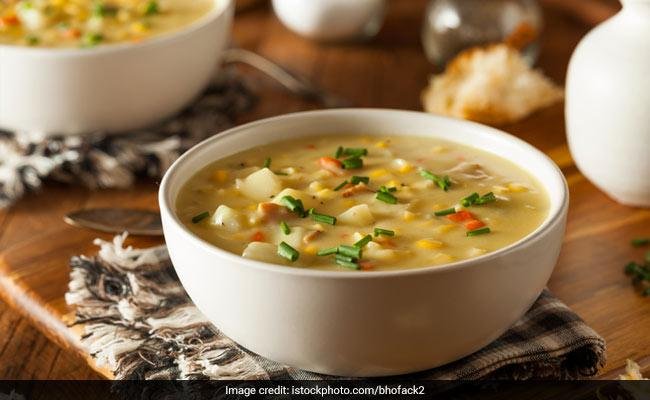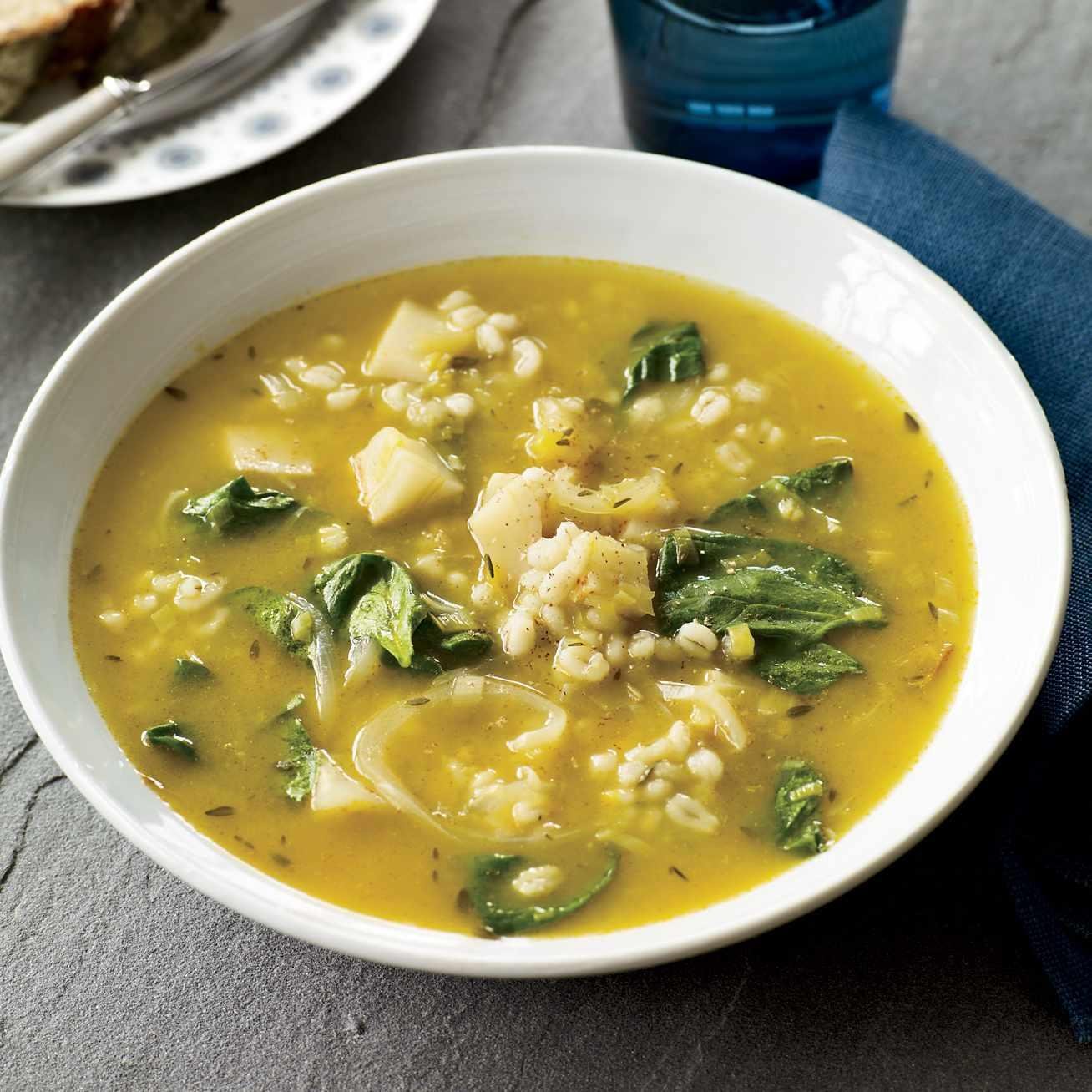Hey there foodies! As the cold weather approaches, it’s time to cozy up with a warm and hearty bowl of soup. And what’s better than a wholesome and nourishing vegetable soup to warm you up? Loaded with seasonal veggies, this recipe is not only delicious but also packed with nutrients. Whether you’re battling a cold or just looking for a comforting and healthy meal, this vegetable soup recipe is the perfect go-to. So, grab your apron and let’s get cooking!

Introduction
Hey there foodies! With the winter season upon us, what better way to warm up than with a delicious bowl of vegetable soup? In this article, I’m excited to share my very own vegetable soup recipe that’s perfect for cold weather. By using fresh and nutritious veggies, you’ll not only feel satisfied but nourished as well. So grab your apron and let’s get cooking!
Ingredients
When it comes to cooking, the ingredients you choose can make all the difference. For this vegetable soup recipe, I recommend using fresh, seasonal vegetables like carrots, celery, and onions. These vegetables will provide a rich and robust flavor to your soup. In addition, you can add additional ingredients such as garlic, herbs, and spices to give your soup a little extra kick. Remember to always choose high-quality ingredients and avoid using canned or processed foods. Your soup will taste better and be healthier for you in the end.
Preparing the vegetables
Preparing the vegetables is a crucial step in making a delicious vegetable soup. First, wash all the vegetables thoroughly under running water, and then chop them into bite-size pieces. To bring out the best flavors and nutrients, sauté the vegetables in a pan with some olive oil until they are slightly browned. This also helps to soften them and bring out their natural sweetness. You can add some garlic, onion, and herbs to enhance the flavor. Remember to use the vegetables that are in season to make the most flavorful soup. By following these simple steps, you’ll have a hearty and healthy vegetable soup that’s perfect for cold weather.

Cooking the vegetables
Cooking the vegetables for your vegetable soup is one of the most important steps in making a delicious and flavorful soup. To begin with, make sure to wash and chop your vegetables uniformly to ensure even cooking. Next, sauté your vegetables in a pot with some olive oil or butter over medium heat until they become tender and fragrant. This step helps to bring out the natural sweetness and flavors of the vegetables. Avoid overcooking the vegetables as they will become mushy and lose their nutrients. With these simple tips, your vegetable soup will be a warm and comforting meal for any cold weather day.
Vegetable broth
If you’re looking for a comforting and healthy soup to warm you up during cold weather, look no further than vegetable soup! One of the key ingredients in any vegetable soup is a flavorful and nutritious vegetable broth. You can easily make your own vegetable broth by simmering a variety of vegetables and herbs in water for an hour or more. Use a mix of carrots, onions, celery, garlic, mushrooms, and herbs like thyme and bay leaves for a rich and savory broth. Plus, making your own broth is a great way to reduce food waste by using up vegetable scraps and leftovers.
Combining the vegetables and broth
Now that we have all our vegetables prepared, it’s time to combine them with the broth to make our delicious vegetable soup for cold weather. Start by heating up a large pot on medium heat and adding in some oil. Once the oil is hot, add in the onions and garlic, and sauté them until they become translucent. Then, add in the rest of the vegetables and stir them around for a few minutes. Once they start to soften, pour in the broth and bring it to a boil. Reduce the heat to low and let the soup simmer for about 20-25 minutes, until the vegetables are fully cooked and the flavors have melded together. Don’t forget to season with salt and pepper to taste. And voila! Your hearty and wholesome vegetable soup is ready to be enjoyed.

Seasoning the soup
Seasoning the soup is one of the most important steps in making a delicious vegetable soup for cold weather. A well-seasoned soup can warm you up from the inside out and leave a lasting impression on your taste buds. To season the soup, start by adding salt and pepper, and taste as you go. You can also use herbs like thyme, rosemary, and bay leaves to add depth and aroma. For an extra kick, try adding a pinch of cayenne pepper or a dash of hot sauce. Remember to adjust the seasoning to your personal preference and taste. A well-seasoned soup is sure to be a crowd-pleaser, especially during the chilly winter months.
Serving suggestions
When it comes to serving suggestions for vegetable soup recipe in cold weather, I like to keep things simple yet flavorful. A dash of freshly chopped parsley or cilantro on top of the soup can add a burst of freshness and color. A slice of freshly baked bread or croutons on the side can make this soup a filling meal. You could also add a dollop of sour cream or a sprinkle of grated Parmesan cheese for some extra creaminess and depth of flavor. These little touches elevate the soup to the next level and make it a perfect comfort food for chilly days!
Storage and reheating
When it comes to storing and reheating your delicious vegetable soup, there are a few things to keep in mind to ensure it stays fresh and tasty. First, always let the soup cool down to room temperature before placing it in the fridge or freezer to avoid bacterial growth. Once cooled, store it in an airtight container and make sure to label it with the date. To reheat, simply place the soup in a pot and heat it up gently over low to medium heat, stirring occasionally. Avoid boiling the soup as this can make it lose its flavors and nutrients. With these tips, you can enjoy your comforting vegetable soup all week long!
Conclusion
In conclusion, this vegetable soup recipe is not only delicious but also a perfect dish to warm you up during cold weather. It’s packed with nutrients and flavors that will leave you feeling satisfied and nourished. Remember to use fresh vegetables, adjust the seasoning to your taste, and follow the cooking instructions to get the best results. This recipe is also very versatile so feel free to experiment with different vegetables and spices. Don’t forget to share it with your friends and family, they will love it!
Hey there fellow foodies! If you need more from recipe ideas to cooking techniques and even ingredient substitution tips, Cookipedia has got you covered. Look no further than cookipedia page